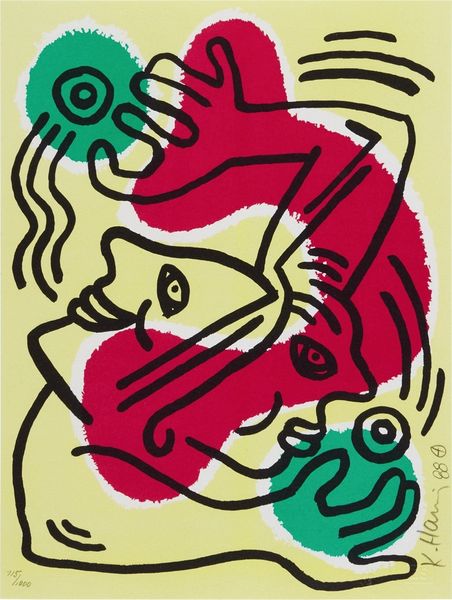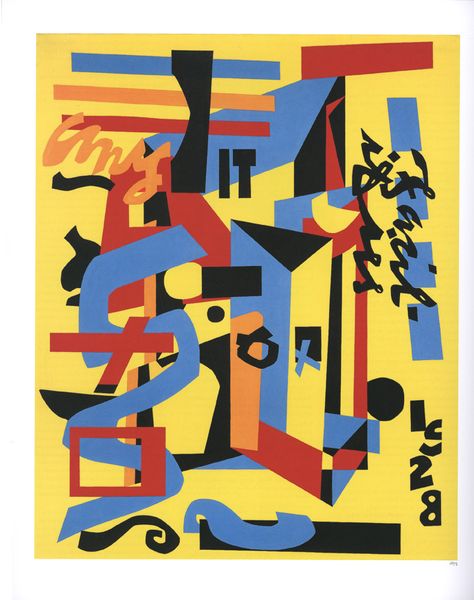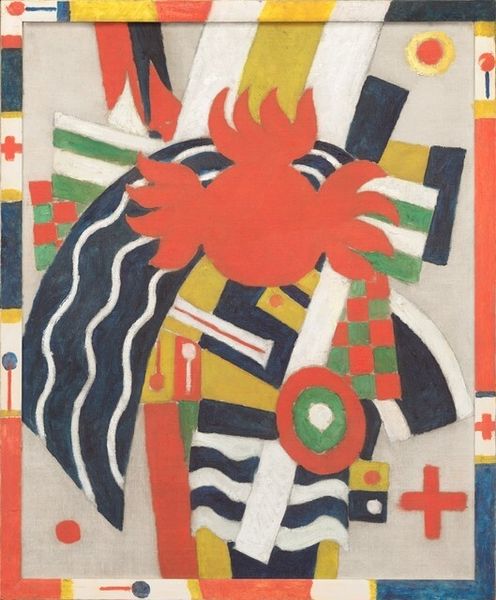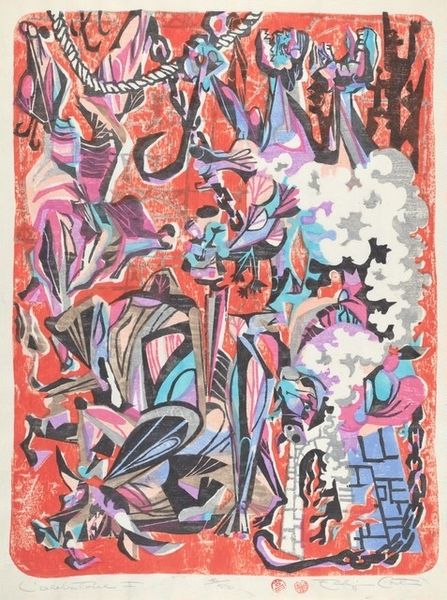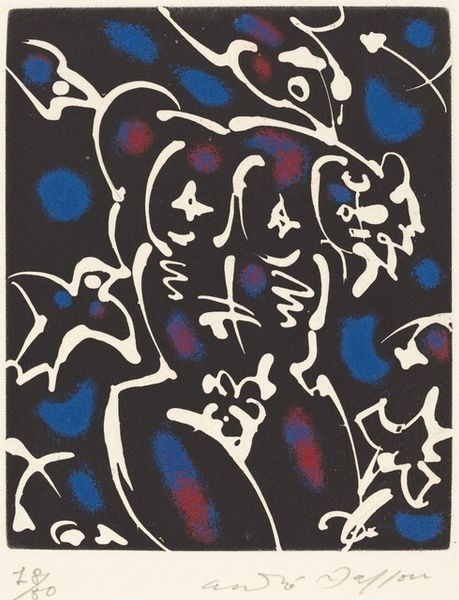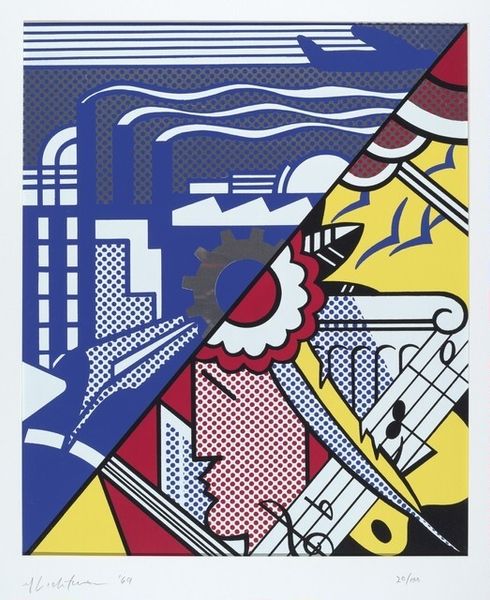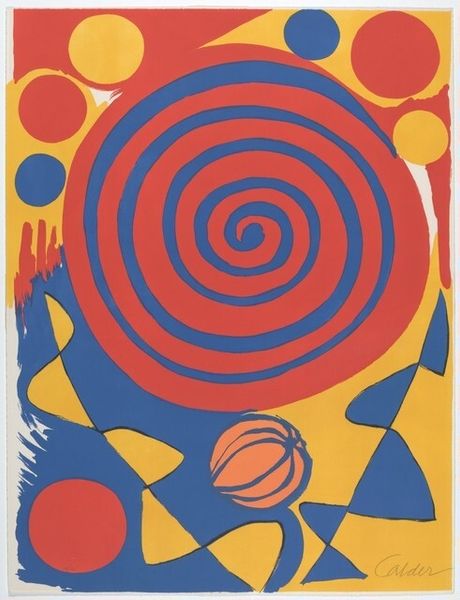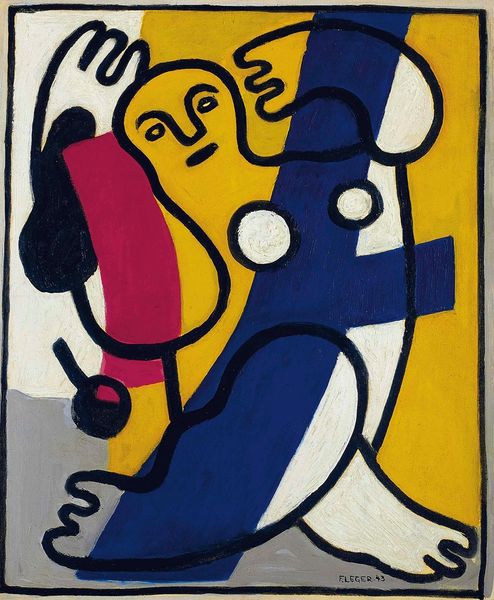
Dimensions: Image: 344 x 253 mm Sheet: 305 x 225 mm
Copyright: National Gallery of Art: CC0 1.0
Editor: This is Ralph Cornell Seigle's "Jack in the Box," from 1946, looks like acrylic paint and print. It feels almost like a flattened circus poster with its primary colors and playful geometric shapes, yet there’s something unsettling about that grinning face. What catches your eye? Curator: I am intrigued by the visible traces of its making. You see the inherent limitations within printmaking itself. Mass production promises endless copies, yet each print carries slight imperfections, misalignments, or variations in ink density, all telling of the physical labour and industrial processes inherent in its construction. Editor: So, you're seeing the human hand, or the machine's, even within the 'perfect' repetition? Curator: Exactly. And acrylic paint from that time would've carried a distinct texture and sheen compared to paints manufactured today, affecting our perception of depth, colour saturation and therefore influencing our perception of form. Its very materiality contributes to the message. Think, too, about access: Were these high quality materials? Does the choice of media relate to economic limitations for the artist? Editor: I hadn't thought of that, how the availability or affordability of materials dictates the art that’s made. Curator: These weren't just choices about aesthetics, they were decisions deeply entwined with the post-war landscape, industrial production and perhaps the artist's own financial circumstances. I wonder about his relationship with this medium… was printmaking a path of least resistance, or did its affordances lead to certain material experiments? Editor: Seeing it this way shifts everything. It is not just a design anymore. I need to consider not just 'what' but 'how' it was created to even begin understanding it! Curator: Precisely. Materiality always matters, as that informs and impacts the means of production. We gain fresh perspectives on the context around the artist, the labor that produced "Jack in the Box," and that changes its story completely.
Comments
No comments
Be the first to comment and join the conversation on the ultimate creative platform.
